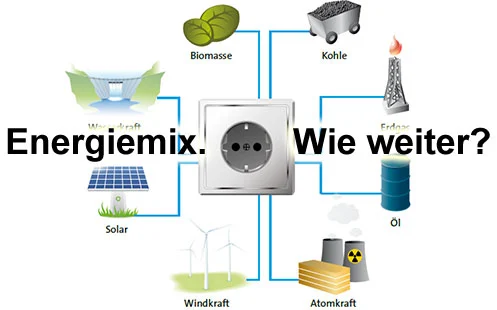Power and fuels from sunlight: When is the postfossil age due?
At present, fossil fuels still contribute over 80% of the power generated in Germany. In the process, too much carbon dioxide is released into the atmosphere, damaging the climate. A reversal has been tabled, but what’s the energy mix going to be in the year 2050?
Professor Wolfgang Eberhardt presents a variegated bouquet of possibilities for the energy mix of the future. The physicist and Scientific Director at HZB, the Berlin Helmholtz Centre for Materials and Energy in Adlershof, is convinced: the next decades will see equal importance attached to firing fossil resources like coal, oil, and gas and to targeted advances in the use of renewable energies like solar, wind, and water. Nuclear energy he sees merely as a bridging technology: too great are the problems with radioactive waste and ultimate storage, and when they do find technical and geographic solutions, they will be political anathema to society for hundreds of years.
At present, fossil fuels represent over 80% of power generation in Germany. Eberhardt is wary about the exact date after which CO2 emitting technologies can be superseded completely: within the next fifty to hundred years, he replied. But not because the carbon based energy sources are becoming scarce, but because in the long run the atmosphere cannot absorb any more CO2 without triggering a climatic collapse.
Eberhardt is convinced: renewable energies are the ticket out. For instance, there is an overabundance of solar energy. “The energy the sun sends to the earth in one hour meets the needs of all humankind for a year,” he summed up. In other words, less than a thousandth of the earth’s surface is needed to collect this energy, depending on the efficiency of the technology. However, which of these natural sources will be drawn on the most – at least in our climes – defies prediction to this day. Possibly Europe’s regions will specialise. There are strong winds in the north, a burning sun in the south, and a lot of hydropower potential in the Alps and Scandinavia. Then, there is the crucial matter of large area expansions to the distribution grid, a task Eberhardt considers to be a pan European responsibility. Wind, sun, and water are not available to all in equal measure, so adequate storage capacity must be created in addition. Eberhardt sees the solution in pumped storage plant and compressed air storage.
Breaking water or converting CO2 could produce hydrogen and hydrocarbons that could then be used as chemical fuels for generating power or fuelling aircraft. And this would not emit CO2 into the atmosphere.
Eberhardt is critical of today’s biofuels. Their production requires foodstuffs that would otherwise have fed the world population. Also, their production consumes a lot of clean water, likewise a dwindling global resource.
These drawbacks could be eliminated when a solution is found to produce fuels directly from sunlight. Research has presented various approaches, e.g. the cultivation of special algae that generate fuels. This elegant solution is found in Nature in the form of photosynthesis. Yet all technologies attempting to imitate this process with stable and improved yield have failed to return satisfactory results. Also HZB is concentrating more on basic research into artificial photosynthesis. In addition to the production of solar fuels, the team of about 200 are also researching into the optimisation of photovoltaic modules. Simplified production, higher efficiency, and less consumption of materials and energy are important subjects. “We still see a great potential in thin film solar cells,” explained Eberhardt. Are there other materials with a greater yield than silicon wafers? The efficiency of these traditional crystalline structures is about 20%. Solar cells of amorphous silicon or organic absorbers are two hundred times thinner, and so save a lot of material and costs in their production, but at present they have only half the efficiency. Greater efficiency is shown by thin film modules of copper indium sulphide or selenide (CIS), of about 15%. As a measure to promote the transfer of technology from top level research into industry, a centre of excellence for thin film and nanotechnology for photovoltaics (PVcomB) was set up in 2007 in Adlershof in a joint project with TU Berlin. Since 2009, the work at this centre has received €12m in funding from the Ministry of Research, with a further €3m coming from the State of Berlin.
No wonder that the HZB enjoys such a high status among young chemists, physicists, and engineers. “Students are easily infected by the fascinating potential of solar research,” explained Eberhardt.
by Paul Janositz
Link: www.helmholtz-berlin.de
